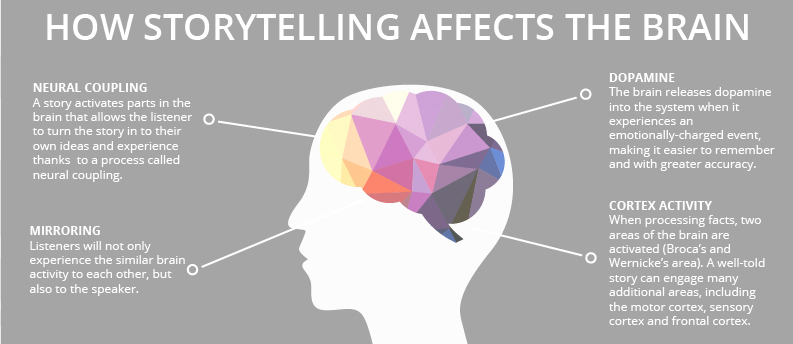Storytelling is central to everything around us, but as social media marketers, we tend to put them in the backseat and let our agenda ride shotgun.
I love a good story.
I even love a bad story. I’ve seen Timecop more times than I care to admit…okay, it’s seventeen.
Stories have an amazing ability to make us feel connected to each other, share experiences with one another, and entertain us…especially if they star Van Damme.
I’ll be the first to admit, it’s tough to make room for storytelling in our marketing strategies. We’re busy working toward goals, nurture flows, and success metrics. We get hyper-focused on educating, converting leads, measuring performance, and getting to the point.
“Our users are busy,” we say. “They don’t have time for anecdotes. Give them the info they need, and give it to ‘em quick.”
It gets complex, because this is all true…Our users are busy, and don’t want to waste their time with needless anecdotes. The problem is that it is fundamentally flawed to abandon creativity in favor of value for our audience: the two go hand-in-hand. Because we forget this, we forget an important piece of groundwork when it comes to our brand story on social media.
Why Stories Are So Important In Social Media
This recent infographic from OneSpot may make your brain look prettier than it actually is…and your face isn’t that nice and shapely…but it does call out some important biological reactions caused by stories.
Stories are the skeleton key to retention and connection, on a chemical level. They’re the key to our audience understanding and holding onto our message.
A recent Gallup poll published in the Wall Street Journal notes that 62% of consumers say social has no impact on purchasing decisions.
Rather, the poll suggests, people turn to friends, colleagues, and family for recommendations, so activating your current customers as advocates is crucial to success.
This is why stories matter. If staying top of mind and having our value at the center of our audience’s memory is how we attract new customers, and stories are how we create those chemical and synaptic reactions in the brain, they’re crucial to our success.
Customer-Centric Can’t Be An Empty Mantra
Stories don’t only help our customers understand our message. They help us understand our customers. This is why developing personas for your social audience and content is so crucial, and why it needs to be your starting point.
A mistake that we make way too commonly is to start with our brand story (and many times, develop a brand story without looping in customer-facing teams).
“We do this…We make that…We sell this way…”
How do we know this is correct if we don’t know who the customer is? What do they care about? Our customers have stories of their own, and we can learn more about our brand from those than we can from our imaginations.
It’s crucial to develop our content around our customers’ needs, just as it is for how we develop our products and services. By learning the stories, life experiences, and needs of our customer, we create the chemical reactions and connect synapses in our own brains that will make our brand story and content creation 100x easier.
Data is the Key to Development
The best way to understand and learn our customer stories is to dive into the data. I know, that seems counterintuitive, but with a sophisticated system of measurement, we’re able to glean valuable insight about what our customers want, need, and enjoy. We can find out demographic info about who they are, qualitative summaries of what they care about through profile and keyword analysis, and activity data that gives us some psychological queues about what drives them.
This is why social media measurement has started to – and must continue to – go beyond listening and monitoring for the purpose of responding to mentions. Its a necessary component to developing a plan, strategy, and understanding of our own individual marketplaces. Once this analysis of the landscape is done, the foundation of our own brand story will be much stronger than if we built it on unstable ground (that was a great structural engineering metaphor…you’re welcome).
Written by Kevin Shivey. To read the full article, click here. For more information on creating your own online brand, custom WordPress website and social media strategy, please visit us at www.mydigibrand.com and follow us everywhere @mydigitalbrand.



